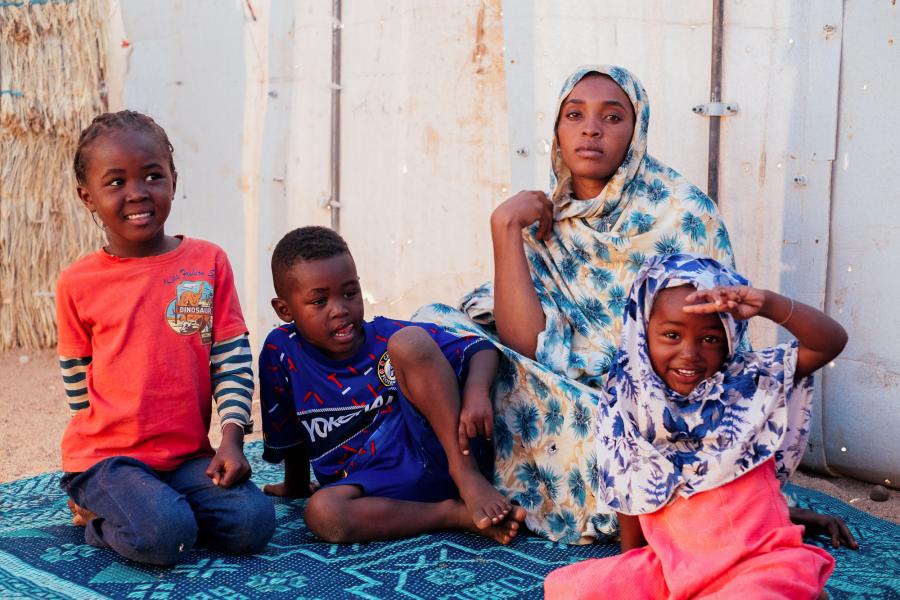2021 Year-end population figures
- Refugees and asylum seekers (Burkina Faso, Mali, Mauritania and Niger): 231,000, 78% women and children
- IDPs (Burkina Faso, Mali and Niger): 2.1 million IDPs
- IDP and refugee returns: 79,000
- Other people of concern (Niger): 50,000
2021 situation overview
The security environment in the Sahel continued to deteriorate in 2021, with serious implications for the lives of the forcibly displaced. Despite military operations carried out by national and international security forces, extremist, non-state and other armed groups continued to maintain a strong foothold in the Mali-Niger-Burkina Faso tri-border area and expanded their reach towards coastal countries, subjecting civilian populations to violence and repeated attacks.
Within the past two years, the number of refugees and IDPs in the central Sahel has grown by over 200%, with almost 2.1 million at the end of 2021. With coastal countries increasingly threatened by the Sahel conflict and instability, influxes from Burkina Faso into Benin and Côte d'Ivoire took place in 2021 and were expected to continue in 2022. In addition, high population growth and climatic hazards contributed to growing food insecurity in the Sahel. Repeated shocks, including droughts and floods, greatly affected the livelihoods of the most vulnerable in 2021, including forcibly displaced people, leaving many without shelter and giving rise to tensions with host communities grappling with their vulnerabilities.
To address the growing needs of people forced to flee in the Sahel, UNHCR’s response focused on protection, emergency preparedness, shelter and core relief items, prevention of and response to gender-based violence, education, and an environmentally conscious approach. UNHCR distributed $6.5 million in cash assistance to people of concern, while 167,000 benefited from shelter support and 185,000 were reached with life-saving core relief items. UNHCR supported gender-based violence survivors and enhanced community-based child protection and education responses. By the end of 2021, in the Sahel region, 57,000 forcibly displaced children were enrolled in primary school thanks to UNHCR’s support. This was a marked increase compared to 2020, as the effects of the pandemic started to wane and UNHCR was able to support children's return to school. However, insecurity in the Sahel continued to disrupt children's access to education, with schools increasingly being taken as targets by non-state armed groups. UNHCR also reinforced its leadership in the protection, camp coordination and camp management, and shelter/core relief items clusters to better support internally displaced people.
UNHCR supported the intergovernmental Bamako Process, which aims to enhance the protection environment in the Sahel, and worked closely with government partners to increase registration and access to documentation of people of concern. Jointly with the Danish Refugee Council, UNHCR co-led Project 21, a protection monitoring project involving over 20 other protection actors that aims to enhance common, evidence-based analysis, advocacy and programming in the Sahel.
In 2021, close to 7,000 interviews were conducted with key informants or heads of households in Burkina Faso, Mali and Niger. In addition, UNHCR sought to work along the peace-humanitarian-development nexus and deepen its partnerships with development actors to help address the root causes of the Sahel crisis. In cooperation with the World Bank and the Government of Burkina Faso, UNHCR supported municipalities and key local actors with capacity-building to help them improve their emergency response in the areas of the country most affected by forced displacement.
